Bug baits
This category of soft baits may be the most versatile of all
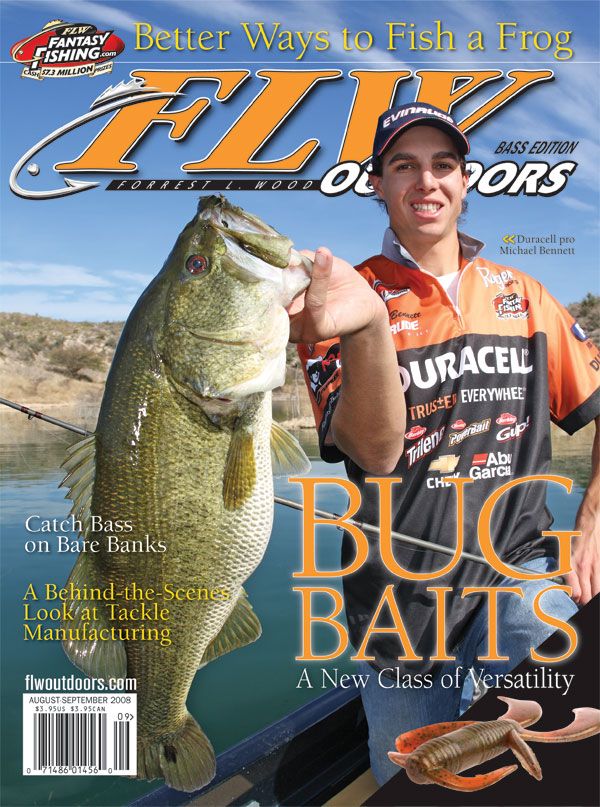
The topic of naming and classifying fishing lures is a large one. Bass have been caught on thousands of variations of hundreds of designs, especially in the soft-plastic arena. Every year, however, anglers scramble around, searching for something new and something different in the never-ending quest to outsmart ever-smarter bass.
Among the recent trends have been gravitations to ultrarealistic baits; small, subtle baits; and baits with just the right amount of plastic trimmed from one spot and added to another for wild, undulating actions. The bug bait, a type of lure that may not officially have its own category (although maybe it should), could be considered a hybrid of all these.
Credentials for making the bug-bait category may be open-ended, but bear with us here. We’re making them up as we go along. A bug bait is versatile. It works well as the business end of a Carolina rig, but also excels on a pegged Texas rig for flipping mats. Switch the color of a bug bait to a bright white or pink hue and it’s an excellent bait for sight-fishing, as most have pincers, paddles and tentacles that flail wildly in a bed.
A bug bait also goes well on a finesse jighead, particularly one that secures the rear end of the bait separate from the hook while allowing a full range of motion from the front – sort of the Gambler Lures Giggy Head or Reaction Innovations Screwed-Up Jighead style. And finally, even if it does require a little trimming, a bug bait makes a nice, lively trailer for jigs, especially when dragged on a football head fast enough to impart some action.
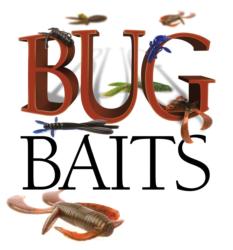 Some of them have enough inherent action that in clear, shallow water they can be simply cast out and reeled in weightless or retrieved with a swimming motion on a small jighead. Most are short enough to work on a drop-shot in deep water. In short, a man could theoretically buy a few bags of bug baits in various colors and streamline his tackle box repertoire. Few other baits, standard creature baits included, can be used for so many things.
Some of them have enough inherent action that in clear, shallow water they can be simply cast out and reeled in weightless or retrieved with a swimming motion on a small jighead. Most are short enough to work on a drop-shot in deep water. In short, a man could theoretically buy a few bags of bug baits in various colors and streamline his tackle box repertoire. Few other baits, standard creature baits included, can be used for so many things.
We regard the general category of bug baits as something of finesse creature baits. They should be no more than 4 inches long and sport crayfish-claw-like appendages in the front, but they don’t necessarily have to be true crayfish imitations. In addition, the center of a bug bait should be fairly meaty and solid (eliminating creatures with hollow-bodied, tube-type middle sections) to accommodate a flipping hook, but not so thick as to limit other uses – as in dedicated jig trailers, such as a NetBait Paca Craw.
Now, it’s easy to surmise that many soft plastics could fall into this category while officially being placed into another category by a manufacturer, so it’s important not to take things too seriously here. Some of the more familiar bug baits include lures with the word “bug” incorporated into the name, such as the Berkley PowerBait Sabertail Bug and the Kinami Baits Nories Bug. But others, such as the Zoom Bait Co. Super Hog, Reaction Innovations Smallie Beaver 3.50 and Yamamoto Flappin’ Hog II, fit into the category as well. Smaller, ultrarealistic crayfish baits, such as the Gambler Lures Guido Bug (even though it has the word “bug” in its name), are a little more limited in use, as their subtle actions shine most in clear water and on the business end of a skirted jig, but may be less useful and not quite chunky enough to serve as flipping baits or on the end of a Carolina rig.
Bug-bait theory
Mark Sexton – a lure designer with a fisheries degree at Pure Fishing, which produces Berkley baits – is one of the brains behind a bait that has become a hit for the soft-plastic giant in the past year: the Berkley PowerBait Sabertail Bug. This little lure is one of several in the Sabertail line of Berkley PowerBaits. The Bug, however, is a bit of a deviant from the others in the line, such as the Sabertail Tube and Sabertail Worm. It has appendages in every place possible, and in a variety of shapes. Two of these appendages are especially thick and soft, and they give the Sabertail Bug a slow, falling action reminiscent of a wacky worm. Sexton affectionately refers to these hunks of plastic protruding horizontally from the bug’s body as “meat sticks.”
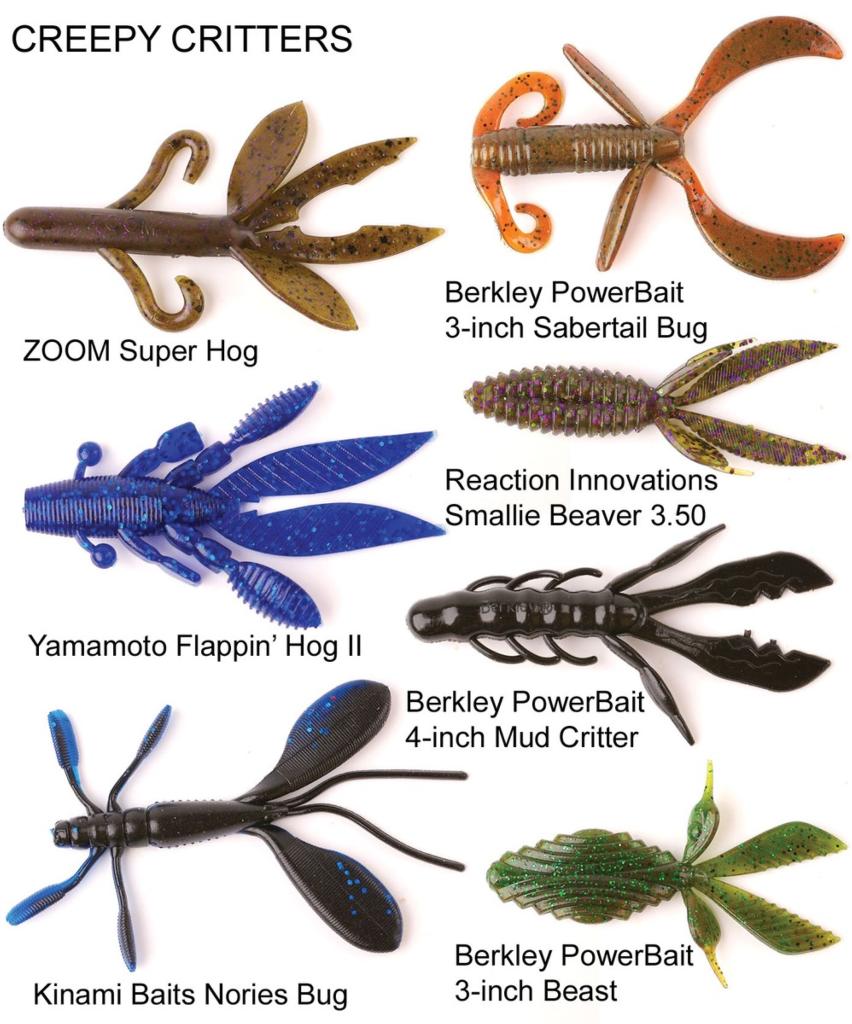 The Sabertail Bug represents a critter of some sort, although Sexton was quick to point out that it’s only a representation of something, anything, a bass would eat and not a true copy of any one type of forage. The critter is, in essence, short and fat, measuring 3 inches long by 2 inches wide at rest. It is complete with a meaty middle section, which will accommodate a finesse jighead, a modest flipping hook or a standard worming hook for Carolina rigging – in essence, its versatility and shape put it into no other category than bug bait.
The Sabertail Bug represents a critter of some sort, although Sexton was quick to point out that it’s only a representation of something, anything, a bass would eat and not a true copy of any one type of forage. The critter is, in essence, short and fat, measuring 3 inches long by 2 inches wide at rest. It is complete with a meaty middle section, which will accommodate a finesse jighead, a modest flipping hook or a standard worming hook for Carolina rigging – in essence, its versatility and shape put it into no other category than bug bait.
“The best thing about this category of baits is that there are no rules,” Sexton said. “What we were shooting for (in the Sabertail Bug) was a bait that had multiple types of actions. There are three actions that prevail. The legs toward the head are quick and have a high, tight action. The longer, `saber’ legs at the rear have a wider, more flamboyant action. Those two meat sticks in the middle are really the defining features of this bait. They slow the rate of fall to half the normal rate, and as they free fall, they quiver like a wacky worm.”
The Kinami Baits Nories Bug is another extremely effective bug bait. Although the lure has flown somewhat under the radar when compared to other baits in the Yamamoto and Kinami lines, it has developed something of a cult following. Derek Yamamoto, founder of Kinami Baits, explained some of the background, beginning with history of the lure’s designer, Norio Tanabe, a pro angler from Japan.
“The Nories Bug was around in Japan for a long time,” Yamamoto said. “I approached Norio and the company he works with to use the design here in the United States. When they agreed, I was ecstatic.”
The Nories Bug is a truer crayfish design than some other bug baits, but it retains an exaggerated, paddle-type pair of claws in addition to a compact overall frame that gives it a more erratic action and puts it perfectly into the bug-bait category.
Applications
Bug baits are versatile – even more so than their big, creature-bait brothers. Their large appendages, especially given their relatively small size, give them a slow fall that works well for finesse applications. But, they aren’t so small as to be useless on the end of a flipping stick or Carolina rig. A few of the applications for a typical bug bait include:
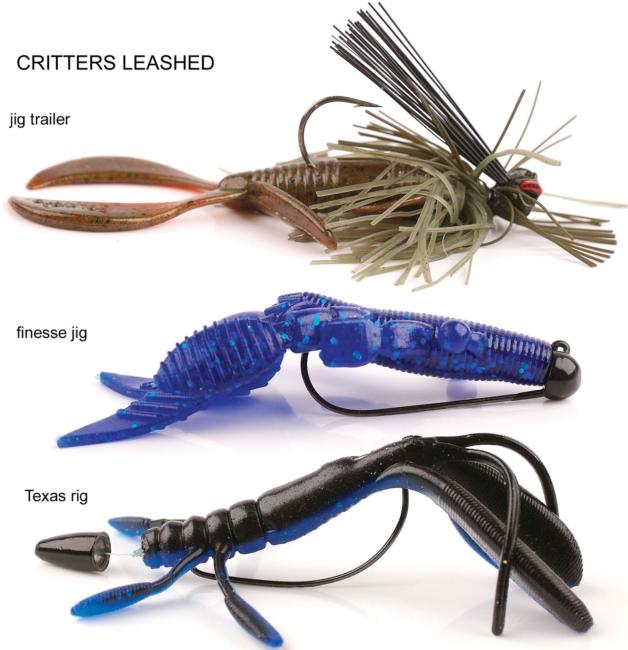 Finesse jighead
Finesse jighead
The shaky-head jig and worm has become a staple on the Wal-Mart FLW Tour, where clear waters and pressured bass are often the order of the day. But a bug bait is a lure that works well on a shaky head. The very design of the head, which is the same design that makes a straight-tail worm quiver and work above bottom, makes the appendages of a Nories Bug do near-magical things with a properly matched rod setup. Toss such a combination into a bass’ bed and prepare to be met with a rude response by the host.
As mentioned previously, bug baits tend to work best on jigheads with a keeper of some sort on the leadhead, such as the Gambler Lures Giggy head. This keeps the bait from being rigged with a bend in the middle, giving it a straighter fall and aiding a little in the durability department.
“Bug baits are good sight-fishing lures,” Sexton said. “They look menacing, and that makes the fish excessively grumpy and mean. The male bass is a comparatively very attentive parent, and that makes him very susceptible to being caught. He vigorously guards the nest and young fry. He protects these valuable pieces of property from things that look like they want to eat them. There aren’t too many things that look more menacing than a good bug bait. To you or me, the equivalent is fighting off `Predator’ or `Alien’ as we have seen in the movies.”
Texas Rigs
Bug baits are excellent choices for fishing the edges of weedbeds, and for this, especially in clear water, a lightweight Texas rig is tough to beat. Again, the slow fall of a bug bait, which keeps it in the strike zone longer than the competition, is a key factor here. Dock fishing and fishing dead timber present similar scenarios. Sexton elaborated: “Many times in the summer, bass hang up under docks that suspend over deep water or suspend in flooded timber. As it is hard to pinpoint the depth they are holding at in some situations, the probability of getting the Sabertail Bug seen by the fish is much higher than most.”
Small slip-sinkers in the 1/8- to 3/16-ounce range are best for these tiny Texas rigs. And because the lures are compact, it’s possible to use a heavier-wire hook by switching to a straight shank, rather than an offset.
“I like a 2/0 EWG most of the time, but if there are bigger fish in the lake I’m fishing, I will go to a straight-shank 4/0,” Yamamoto said. “Some believe the straight shank gives you a better hookset, but the main factor here is you can definitely use a larger (wire) hook.”
A quick change to a bigger stick, heavier line and perhaps a more substantial weight, while keeping a 4/0 straight-shank hook, makes about any type of bug bait excellent for flipping.
“It’s not against the rules to use a straight-shank hook,” Sexton said. “In fact, one of the best bass anglers I have ever known fishes them exclusively on baits like this one. I didn’t take a single metallurgy class in school, but one thing that seems to hold true is that if metal is bent, it’s usually weaker. The hooks these days are spectacular and do a great job of keeping tensile strength on offset and wide-gap hooks. But if you are planning to use these baits in some seriously heavy stuff, then by all means, go with a straight-shank hook.”
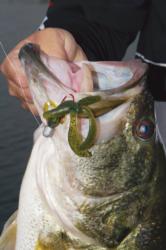 Jig trailers
Jig trailers
Something as large as a full-size creature bait is usually a little much for a jig trailer – not so with a bug bait. While some anglers may opt to trim portions of the bait away to better fit on a jig hook, just as many use the whole shebang, particularly when dragging or stroking football-head jigs and the like – techniques that impart a lot of action into the trailer.
“The first guy to use the Nories Bug as a jig trailer was Dave Lefebre,” Yamamoto said. “He would rave about how he loved that thing behind his jigs. I think he did trim a little off the top of it, but when I use it, I leave the whole thing intact. I’m not afraid of a little bigger bait, and I don’t think the fish are, either, especially on a jig. I like using the football-head-type jigs and definitely recommend the Nories Bug for that application, primarily for the added bulk in the presentation. And when you drag and hop the jig, those big, heavy legs are going to move some water and get some attention.”
“Big football heads really work well with the Sabertail Bug,” Sexton concurred. “That extra water movement created by all the moving parts makes it a very noticeable bait. One method of fishing this bait is similar to `stroking’ a jig. Allow the bait to go all the way to the bottom on the cast, and then give it a sharp and violent stroke. This moves a ton of water and gets the other four legs up and flapping. Then, on the fall, it goes back to a slow fall rate while the meat sticks are quivering like a wacky worm.”
Carolina rigging, which works in a similar manner to dragging a football-head jig, is another possible option for bug-bait fishing, especially on clearer, shallower flats. Long sweeps of the rod that bring the bait rising high in the water column, only to flutter back down at an agonizingly slow rate, work perfectly with a bug bait’s inherent design characteristics.
In the end
When it comes down to it, failing to use bug baits doesn’t necessarily make an angler less-competent. Hey, many may not have even known there was such a thing as bug baits before reading this. But spend any time garnering fishing advice from professional anglers, and there will soon be a common thread: Do something a little different. Whether it’s in the presentation, retrieve, area, line style or anything else, anglers will say, in today’s pressured fisheries, standing out from the crowd usually pays off in a big way. Bug baits, which serve a range of uses, from power fishing to shaky heading, do just that.